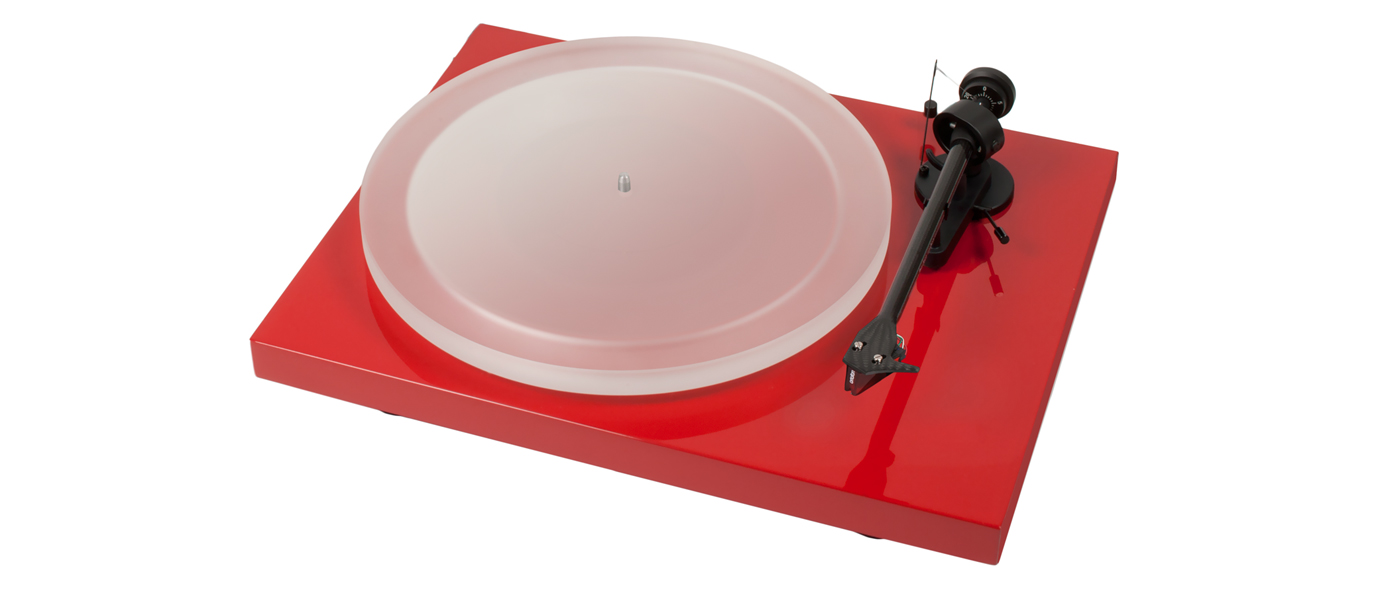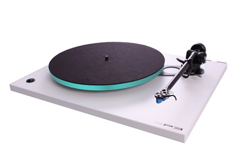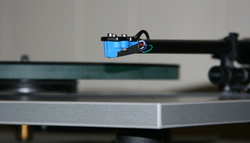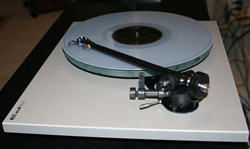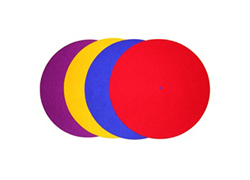Introduction to the Rega RP3 Turntable
Rega, the respected British hi-fi company, was officially founded in 1973 with a broad mission statement that is very elegantly stated on their website. The Rega mission is “to manufacture high quality, specialist hi-fi components that are reliable, consistent and sensibly priced”. Ever since their founding, Rega has maintained an excellent reputation for meeting these objectives.
Similar to several other hi-fi manufacturers, Rega seems to never sit still. They are always working on the next new product offering. They continuously roll out new models. For example, Rega has recently updated four of their turntable models. The new turntables get an “RP” designation at the front of their model numbers which is presumably short for “Rega Planar”.
REGA RP3 TURNTABLE SPECIFICATIONS
- Design: Belt Driven Turntable
- Motor: 24 V Low Noise, Low Vibration, Hand-tuned
- Platter: Glass with Felt Mat
- Speeds: 33-1/3 and 45 RPM
- Rumble: Not Stated
- Wow & Flutter: Not Stated
- Dimensions: 4.5″ H x 17.5″ W x 14.25″ D
- Weight: 11 Pounds
- MSRP: RP3: $895 USD
- MSRP: Elys 2 Cartridge: $295 USD
- MSRP: TTPSU External Power Supply/Speed Box: $395 USD
- Rega
- SECRETS Tags: Turntable, Rega, Elys
My review here covers the Rega RP3. It comes with the RB303 tonearm which is an update to Rega’s venerable RB300 arm. Also reviewed here are the Elys 2 cartridge and the TT PSU speed box. The 3 series of Rega turntables is probably one of the best-selling turntable lines in the history of the world. Will this new model be able to sustain the momentum Rega has going for them? I can’t wait to find out!
Design of the Rega RP3 Turntable
The RP3 advances Rega’s turntable philosophy of a lightweight plinth design. Rega believes that heavy turntables are resistant to the onset of vibration but they will vibrate and when they do they tend to store energy in their mass as opposed to dissipating the energy. So Rega chose a different path in making their plinths very light but rigid. The thought behind this approach is that the system dissipates energy and reduces sympathetic vibrations – it will vibrate as well, but for a shorter duration and with less amplitude.
The RP3’s plinth has a textured external finish which hides the particle board underneath. The underlying board has channels cut out to breakup standing waves. The prior model had a rigid phenolic resin coating to stiffen the plinth. During development of the RP3, Rega’s R&D team found that the system could be stiffened specifically between the tonearm and the spindle. So they developed a bracing system that does just that through the use of two 2 mm-thick phenolic resin braces. One is on top of the plinth and the other is on the bottom, hence the name “Double Brace Technology” or “DBT” for short. The top brace can be seen in the close up below. Holes are drilled in the DBT brace just like structural parts from a spaceship.
What this means is that the plinth is lighter than ever and it doesn’t need a phenolic skin like the old P3’s. So Rega offers the RP3 with a number of different finishes that look better than the old design. My review unit has the “Titanium” finish. Also available are white and a dark grey as well as special edition colors on a limited basis.
The RP3 uses a high quality 24 V motor similar to the one found in its predecessor, the P3-24. The motor is still mounted directly to the plinth, driving the belt through its metal pulley. The platter is a solid piece of glass with a frosted edge and a felt mat of 100% natural wool. The table rests on three feet that are not adjustable. Besides the TT PSU reviewed here, upgrade options include colored mats, improved drive belts and a turntable wall bracket.
This table comes with Rega’s newest incarnation of their wildly popular RB300 series of tonearms. The new model is dubbed the RB303 and it has been optimized through CADD/CAM design processes. The RB303 arms are die cast and hand assembled like their predecessors. What’s different is that the new armtubes are stiffer with a weight distribution that promotes a lighter headshell assembly while breaking up standing waves better. The included counterweight works great for the Rega Elys 2 cartridge but it was just barely heavy enough to work with my Sumiko Blackbird cartridge.
Shims are a required extra if you plan on adjusting the vertical tracking angle. They are available from your Rega dealer. There are different counterweights available to match up better with your cartridge if required.
I also evaluated the Elys 2 MM cartridge. This is the second from the top of the line among Rega’s MM offerings and features parallel wound coils and an elliptical stylus. It is commonly factory fitted with the RP3 table and when purchased this way, it comes at a savings of $100 for the consumer.
Rega sent along their updated power supply, the TT PSU. It has electronic switching between 33-1/3 rpm and 45 rpm. The logo glows green when set to 45 and red when it is set to 33-1/3. This is way more convenient than moving the belt to change speeds. The TT PSU is a much more robust power supply than the standard wall wart and its regulated power supply is governed by a crystal clock. It also has the advantage of reducing vibration by way of its twin phase drive. It also moves the power supply to a remote location away from the low level signals in the cartridge and leads.
The audio signal is via a pair of good quality, attached interconnects with gold-plated RCA plugs. There is no separate ground wire as the ground is via the interconnects. A clear acrylic dust cover is included.
Setup of the Rega RP3 Turntable
This is one of the quickest and easiest turntables to set up. Ever. If you get yours with a factory-installed cartridge, then all you need to do is unpack the system, install the platter and felt pad, plug in the power and signal cables, set the dustcover on top, set the tracking force and anti-skate control, remove the stylus guard and start playing records. That’s it. No ground wire is also a big plus when it is time to get everything plugged in.
Due to logistical reasons, I received the cartridge after getting the turntable in. So I installed the Elys 2 cartridge myself and the operation was a breeze. Rega’s cartridges have a third screw in the middle of the cartridge. Once I got this middle screw installed, the cartridge landed right on the money lengthwise as measured with the included Horizontal Tracking Angle (HTA) template. All I needed to do then was to adjust the HTA using the template and then lock the cartridge in place with the other two screws. There is no need to adjust the Vertical Tracking Angle as the system was designed for an Elys cartridge.
Later on in the review period, I switched to my Blackbird cartridge and found it was heavier and taller than the Elys 2. It still worked OK but I plan to get some shims one day soon as the Blackbird does respond significantly to tweaks in the VTA. I did need an Allen wrench to raise the lift mechanism so it would work with the BB cartridge. The adjustment screw is a rather small and atypical size, but this was no big deal for me as I happen to have the precise size of Allen key amongst my tools.
The tracking force adjustment is set through a graduated knob that uses a clockwork style spring to push the arm up. You start by setting the knob to zero, balance the arm assembly and then dial in the tracking force. This is ingenious but I still used a stylus force gauge to set the tracking force. I strongly recommend you use a stylus force gauge when setting up any tonearm to verify that the setting is in the specified range. Rega suggests setting the force to the top of the range as recommended by the cartridge manufacturer. I generally agree with this.
I placed the TT PSU on a shelf below my turntable stand. The TT PSU has a wall wart that feeds the speed box unit. There is a multi-conductor umbilical cord that sends power to the table. The cables are generous lengths and I doubt anybody will need an extension except in the most unusual circumstances. The TT PSU has a power toggle on the left and a speed toggle on the right. It is a bit of a lightweight unit but it nevertheless serves its intended function with a stately confidence.
The Rega RP3 Turntable In Use
I started out listening with the Elys 2 cartridge. It needed a typical break in period of about 30 hours to start sounding its best. After the break in, I was very pleased with the sound I heard. Many consumers will be thoroughly satisfied with this cartridge. It culls a lot of information from both old and new record grooves and puts many cartridges to shame in this respect. But it didn’t track every challenging record as well as the best cartridges out there. And even though it has acceptable bass extension, I found it lacked the delicacy and air in the treble when compared to more expensive cartridges.
So I replaced the Elys 2 with my Sumiko Blackbird cartridge ($1,099) for the majority of my below listening sessions. I found the BB to be more extended in the bass and treble with greater depth of soundstage. The BB also had better transient attack properties. Bear in mind that the BB is more than three times the price of the Elys 2. It delighted me to learn that the RP3 is an accomplished turntable capable of revealing all but the subtlest differences between the two cartridges.

What can be said about Foo Fighters “Wasting Light” that hasn’t been said already? Not much that I can think of! On this record, the RP3 surprised me by communicating a high amount of detail, even at nearly irresponsible playback levels. The detail retrieval was aided by the characteristically low noise floor.
“These Days” had an epic scale like the Foo Fighters’ live shows only cleaner, with good transient attack. On the speed tune, “A Matter of Time”, the pacing was better than average over the Rega. The treble was smooth and the cymbals had a natural sheen without glare. There was excellent sonic consistency throughout this album when played back over the RP3.

Next up was Joss Stone’s album, deftly titled “LP1”. I was really hoping for more from this album but it is unfortunately hampered by some inconsistent material. Still, the musicianship is good throughout and some of the material is indeed captivating. For example, “Drive All Night” is a satisfying tune, particularly in the way the RP3 passed all the inflection in Stone’s voice. The bass was solid and tight being shy only in the very lowest of fundamentals. (I was listening over a pair of Legacy Audio’s Classic HD speakers with their dual 8″ carbon-fiber woofers bi-amped with a pair of 200 wpc amps.) The rimshots had a satisfying “thwack”! But Stone’s voice sounded a little on the husky side here.
On “Cry Myself to Sleep”, the acoustic guitar’s strings were right in the room with me during the opening refrain. The Rega RP3 nimbly passed the large and small dynamic swings, breathing life and energy into the music.
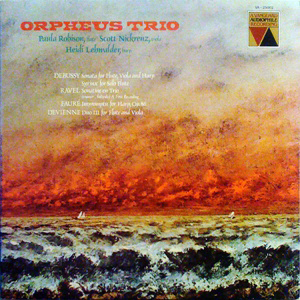
I wanted to listen to some chamber music so I put on the Orpheus Trio, “Debussey, Ravel, Faure & Devienne”. This record sounded nicely balanced with good dynamics on the Rega. Once again, I commented on the low noise floor in my notes and felt that this low noise allowed the delicate harp solos to flow unfettered from the system. The “Debussy Sonata for Flute, Violin and Harp” came through extremely nuanced with a natural fluidity.
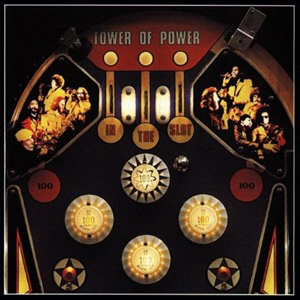
Now for a real classic – the 1975 original pressing on the Warner Brothers Label – Tower of Power “In the Slot”. This record is an excellent test with its complex mix. It’s a real blast from the past!
The RP 3 had the best bass I’ve heard on this record on any table under $2,500; full, clean, tight, tuneful and true to pitch. On the Rega and over the Legacy speakers, I found that all the instruments and singers were in their proper perspective size-wise and spatially as well. There was very low surface noise again, making this old record sound brand new again. I was able to get high SPL’s before feedback started to set in. It was an amazing, fatigue-free jam session.
Conclusions about the Rega RP3 Turntable
The Rega RP3 represents a significant step forward in this iconic turntable line by including several meaningful advances over the P3-24. These advances help the RP3 operate with low background noise and an innate ability for detail retrieval. This table also conveys above average dynamic shadings while providing a solid foundation to support the whole frequency balance of your cartridge.
I also like the newest version of the TT PSU – not only for the convenience of quick and easy speed changes, but also because it further reduces noise in the system. And I could happily live with the Elys 2 cartridge with its smooth response and pleasant demeanor.
So I recommend the RP3 to those who are looking for a turntable system that is a breeze to set up and solid performance straight from the box. But it also has a number of upgrade options that will let the turntable grow and advance with your system. You could start by purchasing an RP3 with a factory-installed Elys 2 cartridge. Then, as your budget allows, you can add the TT PSU followed by other upgrades going forward. The upgrade possibilities mean that the RP3 will remain relevant for years to come.


